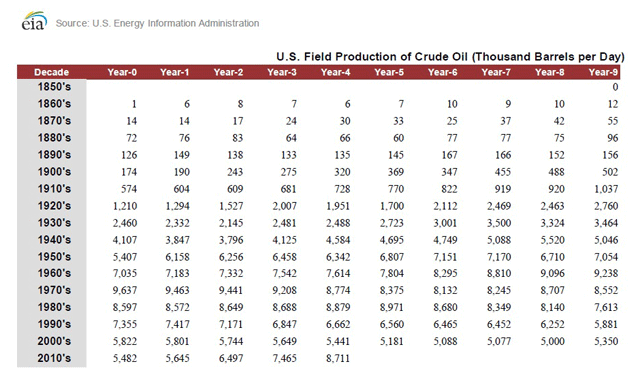
Looking at today’s news, oil service companies and their lenders could be forgiven for having a déjà vu moment. Back in March 1999, the headline on the cover of The Economist magazine was “Drowning in Oil.” The issue featured a story about oil prices which had plummeted to levels not seen since before the oil embargo of 1973-1974. There was an oversupply of oil at the time the magazine was issued. Similar downturns in oil prices followed in 2001/2002 and 2008/2009, both of which were caused by slowing demand and global economic crises. After each of these downturns, there were quick rebounds in the price of oil.
Experts and news pundits today make comparisons to these prior events. In addition, there are comparisons to 1985/1986 when oil prices fell by more than 50% after Saudi Arabia increased its crude oil production to gain market share, both from fellow OPEC members and non-OPEC producing countries. During this period, the Saudi’s ignored weak demand for oil and anemic global economic growth. Their increase in production suddenly and effectively lowered world crude oil prices.
There are many resemblances between 1985/1986 and the current situation. That includes OPEC’s continued production of oil even as oil prices fell more than 50% to under $50 per barrel by January 2015. It is important, however, to understand the fundamental differences between 1985/1986 and today, and what those differences mean for oilfield service companies and manufacturers who provide products to the oil and gas industry. It starts with a brief history of U.S. oil production.
The Rise of U.S. Domestic Oil Production
U.S. oil production grew steadily throughout the first half of the 20th century and peaked at 9.6 million barrels per day (bbl/d) in 1970 before that decade’s energy crisis. In the eighties there was a massive surplus of oil which was exacerbated by the Saudis’ increase in production we previously mentioned. Oil prices in the fourth quarter of 1985 were over $30 per barrel but plummeted to $10 per barrel by the end of the first quarter of 1986.
Oilfield service companies are the first and most severely impacted industry sector in a commodity downturn. They are unable to hedge price volatility as exploration and production (E&P) companies can.
A tremendous consolidation of oilfield services companies occurred in the late 1980s. E&P companies pressured oilfield service companies for lower day rates in an effort to reduce their expenses. At the lower day rates, the oilfield services were no longer profitable. Mass layoffs occurred throughout the industry and caused recessions in oil producing regions. There was a write-down of not only rig asset values but also the values of the big five oil service companies at the time — Schlumberger, Dresser Industries, Halliburton, Baker International and Hughes Tool. As the industry restructured itself during the latter part of the 1980s, only the well-capitalized oilfield service companies and manufacturers survived.

Decades of declining oil production followed and production bottomed out at 5.0 million bbd/d in 2008. Starting in 2009, the U.S. began to produce more oil than it had in decades, driven by technological improvements such as the combination of using horizontal drilling and hydraulic fracturing to unlock oil in tight shale plays in existing and new basins.

Investors poured into the sector which now promised high returns, as other less attractive industries were still reeling from the Great Recession. New oilfield service companies raced to purchase rigs and other assets to service the newly accessible oil reserves in North Dakota, Texas, California, Oklahoma and Louisiana. Existing oilfield service companies and manufacturers expanded their services and products, and created new business units to offer this expanded service and product line to E&P companies. With companies vying for talent and rigs, salaries skyrocketed and day rates increased to record levels.
U.S. oil production grew from 5.6 million barrels per day (bbl/d) in 2011 to 7.5 million bbl/d in 2013 to 8.7 million bbl/d in 2014 (source: U.S. Energy Information Administration (EIA) data). Oil traded in a range of $80-$110 per barrel from late 2010 to the middle of 2014 when oil prices suddenly hit a wall and plunged to under $50 per barrel in January 2015. As of June 2015, there has been a modest recovery with oil prices stabilizing at $60 per barrel.
According to EIA’s May 2015 Short Term Energy Outlook (STEO), factors that helped stabilize prices included: declining U.S. tight oil production; the risk of unplanned supply outages in the Middle East and North Africa; and increased global oil demand. The STEO projected total crude oil production in the U.S. to average 9.2 million bbl/d in both 2015 and 2016.
A New Playing Field
This cycle of contraction has led to a new reality for U.S. oilfield service companies and manufacturers. There were too many oilfield service companies even before the crash and a consolidation was inevitable. Experts are predicting that unlike the quick rebounds of prior downturns, this time sector participants should brace for a long term correction lasting anywhere from 18 months to three years, barring an unexpected geopolitical event resulting in a surge in demand for U.S. crude oil exports. Certain basins will fare better than others, with the Barnett and the Bakken basins projected to be the hardest hit. There are very few rigs operating in the Bakken basis currently, so the need for oilfield service companies in this region has plummeted.
Continued on Page 2...